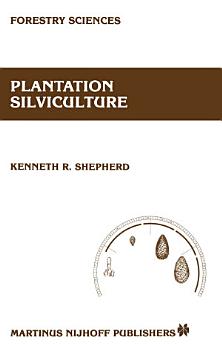Plantation silviculture
K.R. Shepherd
ธ.ค. 2012 · Forestry Sciences หนังสือเล่มที่ 22 · Springer Science & Business Media
eBook
322
หน้า
reportคะแนนและรีวิวไม่ได้รับการตรวจสอบยืนยัน ดูข้อมูลเพิ่มเติม
เกี่ยวกับ eBook เล่มนี้
Plantations of a wide range of tree species have assumed an important place in our world, providing wood for industry, fuelwood and animal fodder, protection from adverse environments and for the soil, as well as amenity and aesthetically pleasing landscapes. silvicultural knowledge of this particular branch of forestry first developed in Europe more than two centuries ago but in many parts of the world is still in a process of rapid evolution as more and more plantations are established to meet specific needs. The first exotic tree species to be established in plantations in my own country were planted more than a century ago and, likewise, New Zealand has a long history of planting. Both countries have developed a vigorous and innovative approach to plantation practice, soundly based initially on European experience but gradually modified to meet the challenges of new environments, new markets, and changed economic circumstances. This book on plantation silviculture was begun some years ago when the lack of a suitable undergraduate text for teaching purposes became apparent. The present text is aimed essentially at this audience. Although I have drawn heavily on the experience of Australia and New Zealand, the principles outlined are applicable anywhere in the world where plantations are being grown and tended, from the United States and Scandinavia to India, South Africa or Brazil. The text should also serve as a useful reference to advanced students and practicing foresters, with the reference list providing an introduction to the literature on this subject.
ให้คะแนน eBook นี้
แสดงความเห็นของคุณให้เรารับรู้
ข้อมูลในการอ่าน
สมาร์ทโฟนและแท็บเล็ต
ติดตั้งแอป Google Play Books สำหรับ Android และ iPad/iPhone แอปจะซิงค์โดยอัตโนมัติกับบัญชีของคุณ และช่วยให้คุณอ่านแบบออนไลน์หรือออฟไลน์ได้ทุกที่
แล็ปท็อปและคอมพิวเตอร์
คุณฟังหนังสือเสียงที่ซื้อจาก Google Play โดยใช้เว็บเบราว์เซอร์ในคอมพิวเตอร์ได้
eReader และอุปกรณ์อื่นๆ
หากต้องการอ่านบนอุปกรณ์ e-ink เช่น Kobo eReader คุณจะต้องดาวน์โหลดและโอนไฟล์ไปยังอุปกรณ์ของคุณ โปรดทำตามวิธีการอย่างละเอียดในศูนย์ช่วยเหลือเพื่อโอนไฟล์ไปยัง eReader ที่รองรับ







